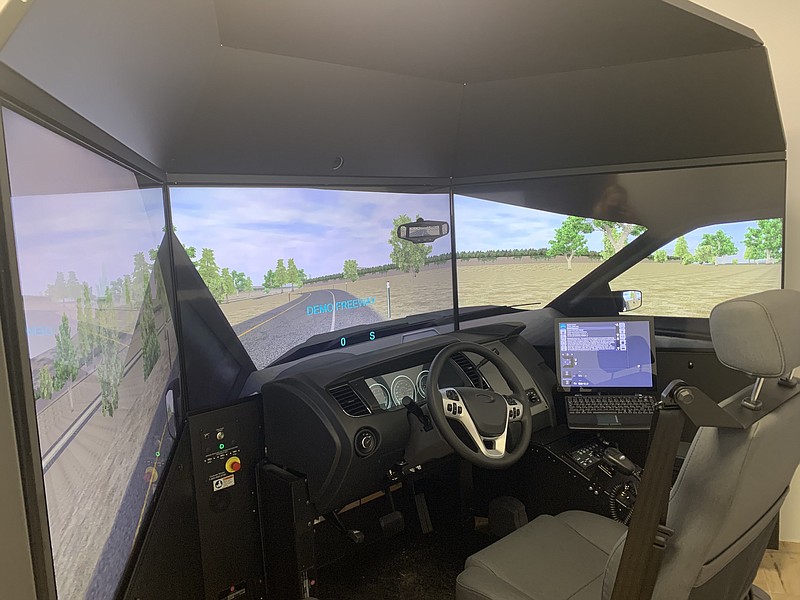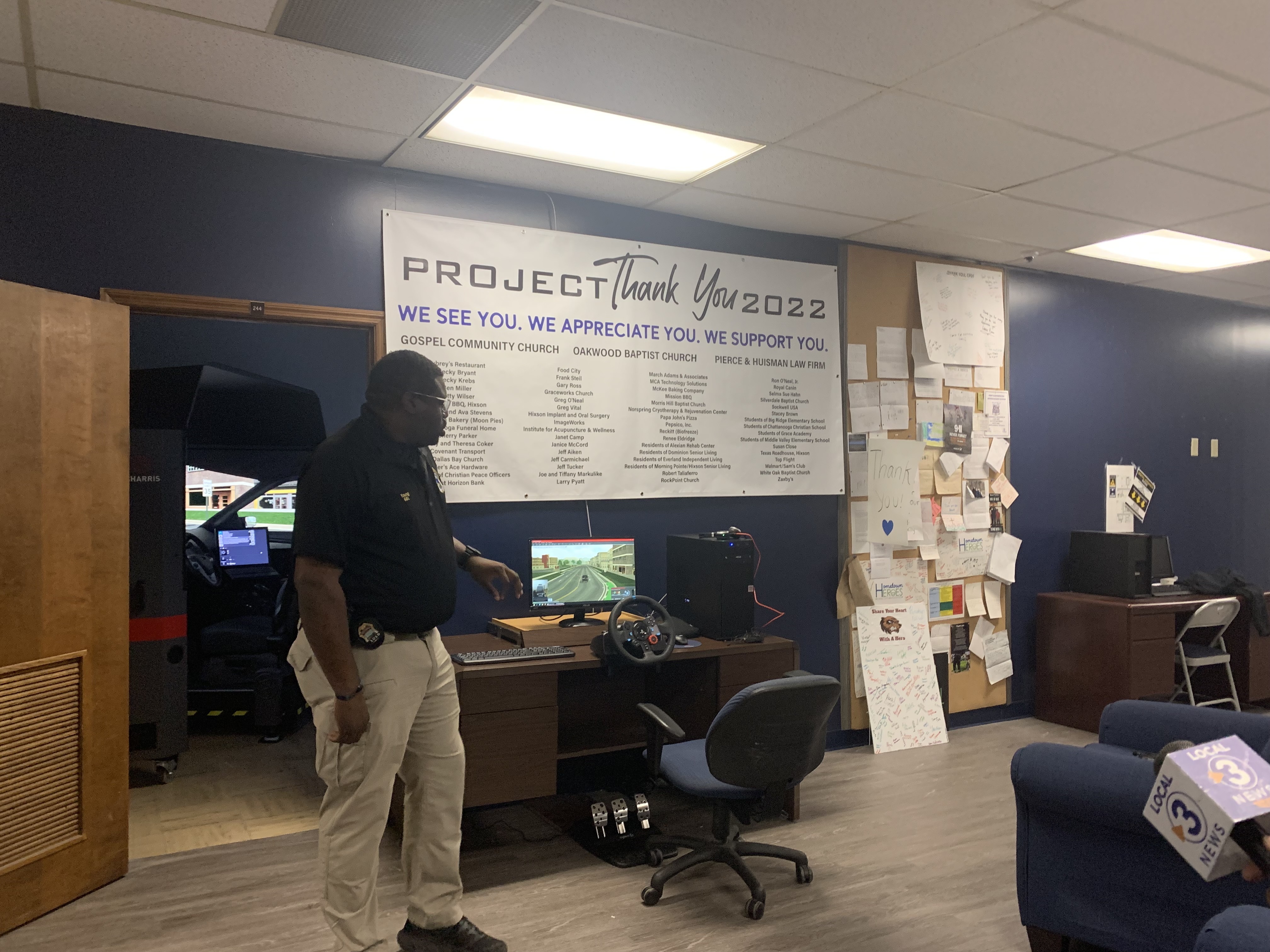Chattanooga police are hoping a new driving simulator unit, to be used for training, will help lower maintenance costs for patrol cars and reduce the number of accidents involving officers.
In 2022, the department spent more than $5 million maintaining patrol cars, according to data obtained through a public records request. It spent around $3.4 million on maintenance in 2021, data shows, and just under $5 million in 2020. The Police Department has 616 cars in its fleet, most of them marked patrol cars.
Between 2020 and 2022, Chattanooga patrol cars were involved in 362 accidents, department data shows — 150 in 2022, 116 in 2021 and 96 in 2020. Thirty-two officers and civilians were hurt in those accidents, according to the department. Most accidents involving patrol cars are minor, Assistant Chief Jerri Sutton said.
(READ MORE: 2 Chattanooga police officers injured in multi-vehicle crash)
"The majority of the accidents occur while we are en route to calls for service," Sutton said during an interview at the department last week.
The new L3Harris PatrolSim simulator, which cost the department $130,700, is made of a driver's seat facing a dashboard, steering wheel and laptop in front of a panel of screens. The interior is a near replica of the inside of patrol cars Chattanooga officers use every day, Lt. David Young said during a recent media briefing.
The simulator can also replicate other vehicles, including ambulances and armored SWAT trucks, which allows officers to start training on those before actually getting behind the wheel of one, Young said.
"But obviously we're most worried about the things that we drive on a daily basis," training officer Ryan Lynn said at the briefing.
Training officers sit outside the simulator room, controlling everything from road conditions and other drivers that appear on the screens to the car's brakes and air conditioning.
The department plans to use the unit for routine training for new and existing officers and to conduct remedial training for officers who get into accidents or have other issues with their driving, Young said.
The simulator gives a report after training sessions, identifying the driver's mistakes and ways to improve.
"And maybe they'll correct how they're driving in the streets," Young said. "We're just trying to reduce the amount of accidents that we have in a controlled environment before they get into the real world."
Patrol cars in Chattanooga have also been equipped with new gear that may help reduce accidents on the way to calls, Sutton said.
New external sirens, low-frequency rumblers and light bars were installed on top of all patrol cars starting in November, according to Sutton. The new gear should make responding officers more audible and visible to other drivers, Sutton said.
"We were not as visible by the SUVs out there, and so the light bar has helped in that sense," she said.
Rumblers can be heard better than high-pitched sirens over traffic and other noises, Sutton said.
Patrol cars, which have had blue emergency lights for decades, also added red lights to make them easier to see at all times of day and for people with colorblindness, said Sue Poole, the department's fleet and facilities manager.
"We have noticed our intersection collisions have gone down since we have the sound going out, up and all around us, and the lights have helped with that," Poole said.
The department plans to study how the new equipment affects accidents and evaluate their performance after a year of use, Poole said.
A patrol car is typically in service for about eight years before being rotated out, according to Poole. The department uses a formula that includes mileage, purchase price and cumulative maintenance cost to decide when to take a car off the streets, Poole said.
While most maintenance on police cars is done in the city's garage, Poole said cars are sometimes sent out for more serious collision repairs, outfitting and repairs covered by warranties.
Contact Ellen Gerst at egerst@timesfreepress.com or 423-757-6319.

